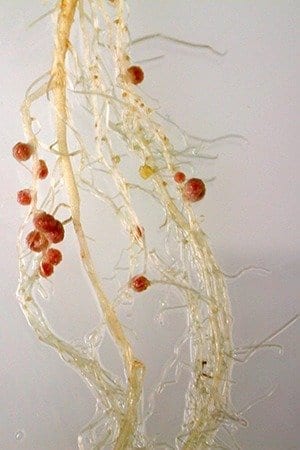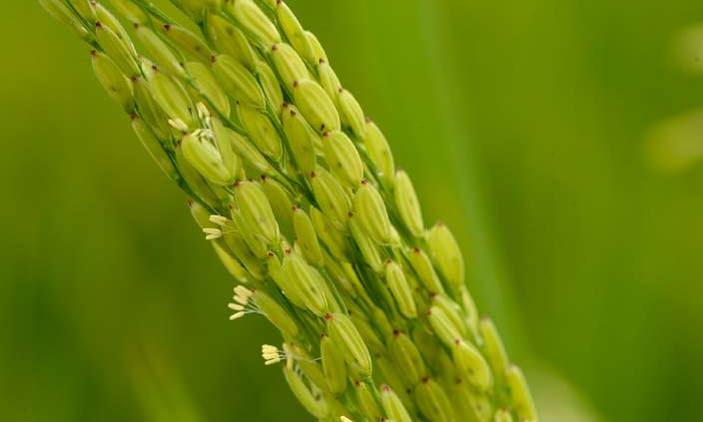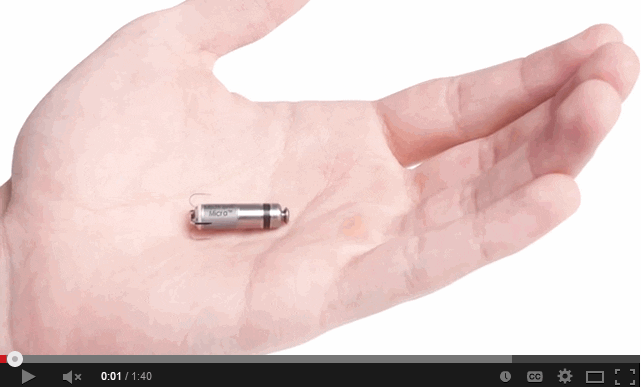
Scientists are beginning to talk about re-engineering crop plants so that, like legumes, they will have on-site nitrogen-fixing systems
NolR is a master off-switch for the process that converts bacteria from free living to nitrogen-fixing
If you pull up a soybean or bean plant and shake off the dirt, you might see odd swellings or bumps, like rheumatic finger joints, on its roots. Inside the cool, soil-covered bumps are bacteria that are making nitrogen with the help of an enzyme, something chemical factories can do only with the help of a catalyst and at high temperature and pressure.
The bacteria, typically members of the genus Rhizobia, break the strong triple bond between the nitrogen molecules in the air and repackage the nitrogen atoms in chemical compounds the plant can use. In return, the plant supplies the bacteria with the energy needed to split the nitrogen molecules in the form of sugar.
Legume-Rhizobia partnerships generate more nitrogen for plants than all industrial fertilizers used today, and they provide the right amount of nitrogen at the right time.
By contrast, much of the synthetic fertilizer applied to farm fields is wasted, washing out the soil into waterways or evaporating into the atmosphere in the form of nitrous oxide, where it becomes an environmental and health risk.
Farmers can already buy Rhizobia-rich biofertilizers to increase nodule formation and improve soil quality without synthetic fertilizers. But scientists are beginning to talk about re-engineering crop plants so that, like legumes, they will have on-site nitrogen-fixing systems, either in root nodules or in the plant cells themselves.
To do that, scientists need to understand the biological nitrogen-fixing machinery as thoroughly as a mechanic understands the valves and pistons of a car engine. The difference is that the biological machinery is far too small to be visible to the unaided eye.
Science got one step closer to this goal recently when a team at Washington University in St. Louis worked out the structure of a protein called NolR that acts as a master off-switch for the nodulation process. By building an accurate atomic model of the protein, they were able to “see” exactly how it recognizes and slots itself into genes to prevent bacteria from embarking on a life as a symbiont. The work was published in April 29 issue of PNAS.
Trust but verify
The process of nodulation is so weird that if you read about it in a science fiction book, you’d probably credit the author with a great imagination.
First, the plant and soil bacteria engage in a molecular dialog to make sure they are compatible partners. The host plant releases a cocktail of chemicals called flavonoids that are perceived by a bacterial protein named NodD, which turns on nod(nodulation) genes. Together the nod genes make a large, complicated molecule called a nod factor.
The nod factor triggers the plant to make an“infection thread,” or a tube through which the bacteria travel deep into the root, where they are wrapped in membrane the plant has synthesized and sequestered in vesicles within the root cortex cells of a nodule. Their metabolism and even their ability to reproduce are so altered that they are like different organisms, and are called bacteroids rather that bacteria.
“It’s like a pathogen invasion,” said Joseph Jez, PhD, associate professor of biology in Arts & Sciences at Washington University, “but Rhizobium is not a pathogen, it’s a beneficial organism. “
The Latest on: Next Green Revolution
[google_news title=”” keyword=”Next Green Revolution” num_posts=”10″ blurb_length=”0″ show_thumb=”left”]
via Google News
The Latest on: Next Green Revolution
- Feed has no items.
via Bing News










